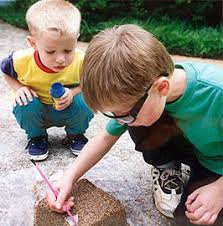In the diverse world of educational strategies, tactile learning stands out as a profoundly impactful method. This approach, central to the philosophy of ScholarlyHelp, emphasizes learning through physical touch and hands-on activities. It’s especially beneficial for students who thrive when engaging directly with their study material. In this comprehensive guide, we’ll explore how learning can revolutionize your study habits and enhance your understanding.
The Essence of Tactile Learning
Tactile learning, at its core, involves using physical activities to grasp new concepts. Unlike traditional learning methods that rely heavily on visual or auditory inputs, learning encourages students to ‘learn by doing.’ This method leverages the sense of touch, which can significantly aid in memory retention and understanding complex subjects. For instance, when studying geography, tactile learners might use 3D maps to feel the terrain, elevating their grasp of the subject beyond what flat images offer.
Benefits of Tactile Learning in Academic Success
Incorporating learning into your study routine can have a multitude of benefits. It enhances engagement, makes learning more enjoyable, and often leads to deeper understanding. For students struggling with abstract concepts in mathematics or science, learning can be a game-changer. By using physical models or constructing diagrams, these abstract concepts become tangible, making them easier to comprehend and remember.
Learning have seen a new dimension with services like if you can pay someone to do my online course for me
Tactile Learning Strategies for Different Subjects
Each subject can benefit uniquely from learning. In history, building timelines with physical cards can help students visualize the sequence of events. Science classes can be transformed through experiments and model-building, turning theoretical knowledge into a hands-on experience. Languages can be learned more effectively through interactive games and physical flashcards. These methods not only make learning more effective but also ensure it’s more inclusive, catering to different learning styles.
Integrating Tactile Learning with Technology
Modern technology has opened new avenues for learning. Interactive apps that require physical interaction, such as dragging and dropping or virtual lab experiments, combine the benefits of learning with the convenience of digital resources. ScholarlyHelp advocates for blending traditional tactile methods with these innovative digital tools, offering a holistic learning experience.
Tactile Learning for Study Guides Enthusiasts
For those who create or use study guides, incorporating tactile elements can significantly enhance their effectiveness. Including activities like fill-in-the-blanks, matching exercises, or even simple tactile indicators for important points can make study guides more engaging and memorable.
Innovative Tools for Tactile Learning
In the realm of learning, innovation is key. Students and educators can leverage various tools to make learning more interactive and tangible. One such tool is the use of sensory bins for younger learners, filled with materials like sand, rice, or beads to explore concepts like counting, sorting, or even storytelling. For older students, using physical models, such as molecular structures in chemistry or anatomy models in biology, can provide a deeper understanding of complex subjects. These tools bridge the gap between theoretical knowledge and real-world application, making learning an immersive experience.
Tactile Learning in Group Settings
Collaboration and group work are integral parts of the learning process. Learning can be particularly effective in these settings. Group projects that involve building or creating something tangible not only foster teamwork but also cater to tactile learners. For instance, constructing a historical diorama in a group can help students understand and remember historical events better. These collaborative activities encourage active participation and make learning a shared experience.
Customizing Study Spaces for Tactile Learning
A conducive learning environment is crucial for tactile learners. Customizing study spaces to include tactile elements can significantly enhance the learning experience. This might involve having a variety of textures and materials at hand, such as different types of paper, fabrics, or building materials. Creating a ‘tactile corner’ in a classroom or a study area at home where students can engage with various tactile resources while studying can be highly beneficial.
Tactile Learning and Mindfulness
An often-overlooked aspect of learning is its connection with mindfulness and stress reduction. Engaging in tactile activities like clay modeling, building puzzles, or even simple tasks like sorting colored beads can be meditative and calming. This aspect of learning can be especially beneficial for students who experience anxiety or stress, providing a way to focus and center themselves while learning.
Future of Tactile Learning in Education
Looking ahead, the future of learning in education seems promising. As educational institutions become more inclusive and cater to diverse learning styles, learning is likely to gain more prominence. Advancements in technology, such as virtual reality and augmented reality, offer new horizons for learning. Imagine learning geography through a VR experience that lets you ‘touch’ and explore different terrains or studying astronomy by ‘handling’ celestial bodies in a virtual space. These technologies can take learning to a whole new level, making education an even more engaging and immersive experience.
Conclusion
Tactile learning, with its hands-on approach, is an invaluable tool in the arsenal of educational strategies. At ScholarlyHelp, we believe in harnessing the power of this method to cater to diverse learning needs. Whether you’re a student seeking deeper understanding or a study guide enthusiast looking to enhance your resources, learning offers a path to more engaging and effective education.
Write and Win: Participate in Creative writing Contest & International Essay Contest and win fabulous prizes.











